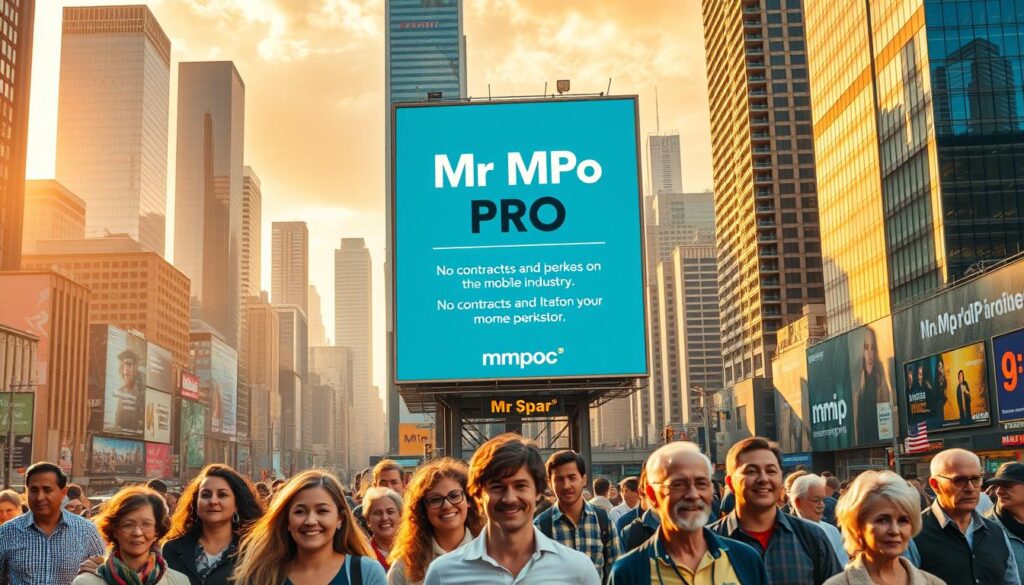
Did you know that T-Mobile’s Un-carrier initiative led to a net gain of over 1.1 million new customers in just one quarter? This revolutionary approach transformed the mobile industry by eliminating traditional contracts and introducing transparent pricing. The Un-carrier movement began with a simple, customer-friendly plan, setting a new standard for the industry.
By removing contracts, T-Mobile offered customers unmatched flexibility and value. This shift not only changed how wireless services were sold but also redefined customer expectations. The introduction of the Simple Choice plan in 2013 marked the beginning of this transformation, offering clear pricing without hidden fees.
T-Mobile’s strategy focused on innovation and customer-centricity, ensuring that each new initiative, like free phone upgrades and ETF coverage, provided tangible benefits. These moves solidified T-Mobile’s position as a leader in the industry, setting the stage for future innovations.
Read more about how T-Mobile’s Un-carrier movement reshaped the mobile landscape in our latest article.
The Genesis of the Un‑carrier Movement
In an industry once dominated by rigid contracts, T-Mobile dared to be different. The company recognized that customers were tired of being locked into long-term agreements with hidden fees. This realization sparked a bold move to redefine wireless service.
Breaking Away from Traditional Contracts
T-Mobile’s decision to eliminate contracts was a game-changer. By doing so, they offered customers the freedom to choose without being tied down. This shift not only changed the mobile landscape but also set a new standard for transparency and flexibility.
Un‑carrier 1.0 – Simple Choice and its Industry Impact
Launched in March 2013, the Simple Choice plan introduced unlimited talk and text with flexible data options. This move disrupted the status quo, attracting millions of customers. The plan’s clarity resonated with those fed up with complex pricing, making T-Mobile a leader in customer satisfaction.
The subsequent adjustments, like the family plan boost in 2014, kept T-Mobile ahead. These initiatives not only evolved the brand but also set a benchmark for future innovations. Learn more about how transparency in pricing can transform industries.
Evolution and Key Innovations in the T‑Mobile Un‑carrier Movement
Over the years, the Un-carrier movement has continuously evolved, introducing groundbreaking features that kept customers engaged. These innovations not only enhanced user experience but also set new industry standards.
From Jump Upgrades to Unlimited Data Strategies
T-Mobile revolutionized device upgrades with its Jump program. This initiative allowed customers to upgrade their phones more frequently, keeping up with the latest technology. The program evolved into Jump 2.0 and later Amped 2.0, offering even more flexibility and value.
In 2015, T-Mobile launched its unlimited data plans, simplifying pricing and eliminating data limits. This move attracted millions of customers seeking hassle-free service.
Highlighting No‑Contract Policies and Customer Benefits
The elimination of contracts remained a cornerstone of T-Mobile’s strategy. Customers appreciated the freedom to switch plans without penalties, fostering loyalty and trust.
| Initiative | Year | Key Features |
|---|---|---|
| Jump Program | 2013 | Frequent device upgrades |
| Unlimited Data | 2015 | No data caps |
| No-Contract Plans | 2013 | Flexible service terms |
These innovations not only simplified the customer experience but also boosted network performance. Learn more about how these strategies transformed the mobile industry.

Innovation Lessons: Myspace’s Pitfalls vs. T‑Mobile’s Bold Approach
In the ever-evolving digital world, innovation is the lifeblood of success. While some companies thrive by breaking the mold, others fade away by sticking to the status quo. Myspace and T-Mobile offer stark examples of these contrasting approaches.
Myspace’s Failure to Innovate and Poor User Experience
Myspace, once a pioneer in social media, fell victim to its own inability to adapt. Its cluttered interface and misguided acquisitions drove users away. The platform became notorious for poor navigation and intrusive advertising, leading to a significant decline in user engagement.
By 2011, Myspace had lost 50% of its active users. Its failure to simplify and prioritize user needs opened the door for competitors like Facebook to take over.
Facebook’s Rise and the Importance of Simplicity
Facebook’s success lies in its clean design and user-friendly experience. By focusing on simplicity, Facebook created an intuitive platform that resonated with millions. This approach not only attracted users but also set a new standard for social media.
Engage with Our Timeline Challenge
Reflect on Myspace’s journey and identify key moments where a focus on user needs might have changed its fate. Consider how T-Mobile’s bold strategies, like no-contract plans, transformed the mobile industry. This comparison highlights the importance of innovation and customer-centric approaches.
The lessons from Myspace and Facebook underscore the critical role of simplicity and user experience in today’s digital landscape. T-Mobile’s proactive strategies, such as eliminating contracts and offering transparent pricing, demonstrate how innovation can disrupt industries and redefine customer expectations.
| Company | Strategy | Outcome |
|---|---|---|
| Myspace | Poor design and complex ads | Decline in users |
| Simple, intuitive design | Rapid growth | |
| T-Mobile | No-contract plans | Market leadership |
Learn more about how transparency and innovation can transform industries in this detailed report.

Customer Impact and Industry Shifts in the Mobile Space
The mobile industry has seen a significant transformation in how customers perceive service providers. T-Mobile’s approach to transparent pricing has set a new benchmark, influencing both legacy and new customers to expect more clarity and value from their plans.
Changing the Customer Experience with Transparent Pricing
Transparent pricing has become a cornerstone of customer satisfaction. By eliminating hidden fees and offering straightforward plans, T-Mobile has built trust and loyalty. This shift has prompted other providers to follow suit, ensuring customers receive clear and honest pricing information. The introduction of Price Lock policies has further solidified this trend, giving customers peace of mind about their costs over time.
How New Promotions and Upgrades Reshape Service Expectations
New promotions like Go5G Plus have raised the bar for service quality. These offerings provide faster speeds and enhanced coverage, making customers expect more from their providers. The focus on network improvements and customer-centric promotions has led to a competitive reaction across the industry, pushing all providers to innovate and improve their services.
| Promotion | Impact |
|---|---|
| Price Lock | Eliminated unexpected price increases |
| Go5G Plus | Enhanced network speed and coverage |
| Family Plans | Cost-effective options for multiple users |
These changes highlight the industry’s move toward customer-first practices, making it essential for consumers to stay informed when choosing their next mobile plan.

Conclusion
As the mobile industry continues to evolve, the impact of the Un-carrier movement remains undeniable. This transformative approach has reshaped how customers view wireless services, emphasizing transparency and flexibility. By eliminating contracts and introducing innovative plans, the movement set a new standard for the industry, influencing both providers and consumers alike.
Over the years, key milestones like the launch of Simple Choice plans and the introduction of unlimited data have kept the movement at the forefront. These strategies not only attracted millions of customers but also prompted competitors to adapt, ensuring a more dynamic and customer-centric market. The focus on transparent pricing and frequent device upgrades highlighted the importance of listening to customer needs and delivering value.
Today, as you consider your mobile service options, remember how these innovations have empowered consumers. The shift toward clearer pricing and better network coverage means you have more choices than ever. Staying informed about industry trends and service quality will help you make the best decisions for your needs.
Explore more about how these changes are shaping the future of connectivity and device integration in our guide to smart home gadgets and wireless innovations.

 T-Mobile Un-carrier: Disrupting the Mobile Market with No Contracts and Perks
T-Mobile Un-carrier: Disrupting the Mobile Market with No Contracts and Perks
0 Comment